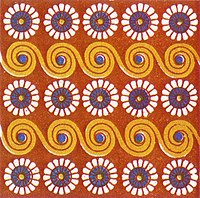Invariance (mathematics)

In math, we like to find patterns and rules that always work, no matter what problem we solve. Sometimes, we discover that there are certain things that never change, no matter what we do. This is what we call "invariance."
Think of it like playing with blocks. You can build a tower with three blocks, and it will look the same no matter where you place it. It doesn't matter if you put it on the floor or on a table, as long as the blocks stay together, the tower will always look the same.
In math, we look for things like this, where no matter how we manipulate the numbers or equations, certain things always stay the same. For example, if we add 3 to 5, it will always equal 8. This is an example of an invariant relationship.
Invariance helps us to simplify problems and find solutions that work in all situations. It also helps us to understand the underlying structure and patterns of math, which can be very useful when we need to solve more complex problems.
Think of it like playing with blocks. You can build a tower with three blocks, and it will look the same no matter where you place it. It doesn't matter if you put it on the floor or on a table, as long as the blocks stay together, the tower will always look the same.
In math, we look for things like this, where no matter how we manipulate the numbers or equations, certain things always stay the same. For example, if we add 3 to 5, it will always equal 8. This is an example of an invariant relationship.
Invariance helps us to simplify problems and find solutions that work in all situations. It also helps us to understand the underlying structure and patterns of math, which can be very useful when we need to solve more complex problems.
Related topics others have asked about:
